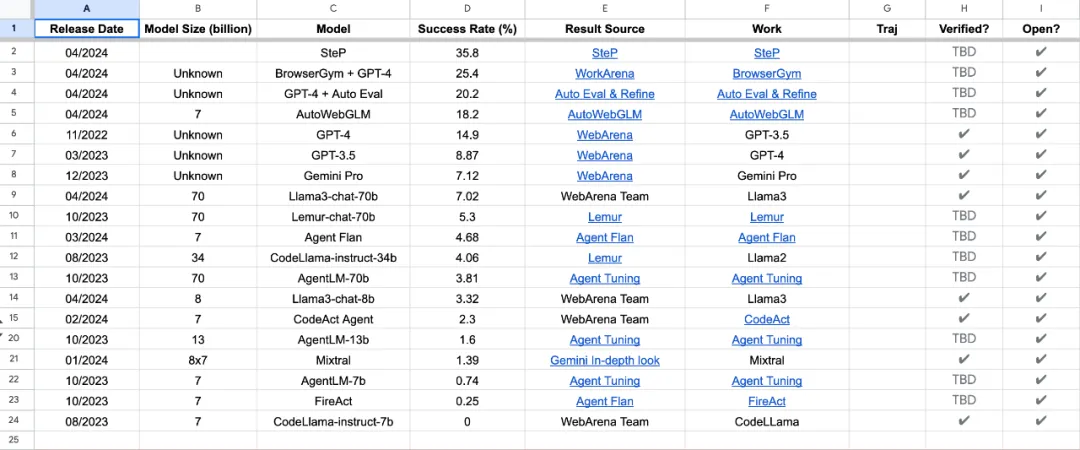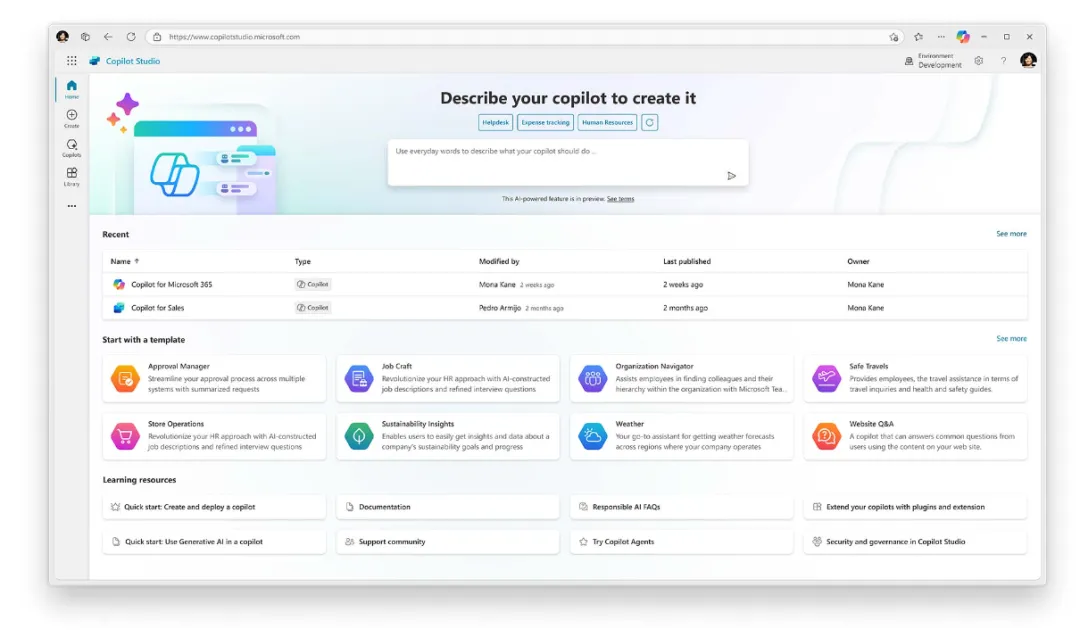 Technology peripherals
Technology peripherals
 AI
AI
 Hype and reality of AI agents: Even GPT-4 cannot support it, and the success rate of real-life tasks is less than 15%
Hype and reality of AI agents: Even GPT-4 cannot support it, and the success rate of real-life tasks is less than 15%
Hype and reality of AI agents: Even GPT-4 cannot support it, and the success rate of real-life tasks is less than 15%
According to the continuous evolution and self-innovation of large language models, performance, accuracy, and stability have been greatly improved, which has been verified by various benchmark problem sets.
However, for existing versions of LLM, their comprehensive capabilities do not seem to be able to fully support AI agents.

Multi-modal, multi-task, and multi-domain inference have become AI agents in the public media space Necessary requirements, but the actual effects displayed in specific functional practices vary greatly. This seems to once again remind all AI robot startups and large technology giants to recognize the reality: be more down-to-earth, don’t spread the stall too big, and start with AI enhancement functions.
Recently, a blog about the gap between the publicity and real performance of AI agents emphasized a point: "AI agents are a giant in publicity, but in reality they are It’s not good.” This sentence accurately expresses many people’s views on AI technology. With the continuous advancement of science and technology, AI has been endowed with many eye-catching features and capabilities. However, some problems and
autonomous AI agents are able to perform complex tasks in practical applications. The context of the mission has generated considerable excitement. By interacting with external tools and features, LLMs can complete multi-step workflows without human intervention.
But it turned out to be more challenging than expected.
The WebArena leaderboard is a real and reproducible network environment used to evaluate the performance of practical agents. Benchmarking the performance of LLM agents on real-world tasks showed that even the best-performing model had a success rate of only 35.8%.

WebArena Ranking Benchmark results of LLM agent performance in real-life tasks: SteP model performs best in success rate indicator , reaching 35.8%, while the success rate of the well-known GPT-4 only reached 14.9%.
What is an AI agent?
The term "AI agent" is not really defined, and there is a lot of controversy about what exactly an agent is.
AI agent can be defined as "an LLM that is given the ability to act (usually making function calls in a RAG environment) to make high-level decisions about how to perform tasks in the environment. Decision-making."
Currently, there are two main architectural methods for building AI agents:
- Single agent: a large The model handles the entire task and makes all decisions and actions based on its comprehensive contextual understanding. This method takes advantage of the emergent power of large models and avoids the loss of information caused by decomposing tasks.
- Multi-agent system: Break down the task into sub-tasks, each sub-task is handled by a smaller, more specialized agent. Rather than trying to use one large general agent that is difficult to control and test, one can use many smaller agents to choose the right strategy for a specific subtask. This approach is sometimes necessary due to practical constraints such as limitations on the length of the context window or the need for different skill sets.
Theoretically, a single agent with infinite context length and perfect attention is ideal. Due to the shorter context, multi-agent systems will always perform worse than a single system on a given problem.
Challenges in practice
After witnessing many attempts at AI agents, the author believes that they are still premature and costly. Too high, too slow and unreliable. Many AI agent startups seem to be waiting for a model breakthrough to start the race to productize their agents.
The performance of AI agents in actual applications is not mature enough, which is reflected in problems such as inaccurate output, unsatisfactory performance, higher costs, compensation risks, and inability to gain user trust:
- Reliability: LLMs are known to be prone to hallucinations and inconsistencies. Connecting multiple AI steps can exacerbate these problems, especially for tasks that require precise output.
- Performance and Cost: GPT-4, Gemini-1.5 and Claude Opus perform well with tools/function calls, but they are still slow and expensive, especially if you need to When looping and automatically retrying.
- Legal issues: Companies may be held responsible for the errors of their agents. In a recent example, Air Canada was ordered to compensate a customer who was misled by the airline's chatbot.
- User trust: The “black box” nature of AI agents and similar examples make it difficult for users to understand and trust their output. Winning user trust will be difficult during sensitive tasks involving payments or personal information (such as paying bills, shopping, etc.).
Real-world attempts
Currently, the following startups are getting involved in the field of AI agents, but most are still Experimental or invite-only:
- adept.ai - $350 million in funding, but still very limited access.
- MultiOn - Funding unknown, their API-first approach looks promising.
- HypeWrite - Raises $2.8M, started as an AI writing assistant and later expanded into agents.
- minion.ai - initially attracted some attention but is now dormant with only a waiting list.
Among them, only MultiOn seems to be pursuing the "give instructions and observe their execution" approach, which is more consistent with the promise of AI agents.
Every other company is going the RPA (record-and-replay) route, which may be necessary at this stage to ensure reliability.
Meanwhile, some major companies are also bringing AI capabilities to the desktop and browser, and it looks like they will get native AI integration at the system level.
OpenAI has announced their Mac desktop application that interacts with the operating system screen.
At Google I/O, Google demonstrated Gemini automating shopping returns.

Microsoft announced Copilot Studio, which will allow developers to build AI agent robots.

These technical demonstrations are impressive, and people can wait and see how these agent functions perform when they are publicly released and tested in real scenarios. Not limited to carefully selected demo cases.
Which path will AI agents take?
The author emphasizes: "AI agents have been over-hyped, and most are not ready for critical missions."
However, As the underlying models and architecture advance rapidly, he said one can still expect to see more successful real-world applications.
The most promising path forward for AI agents may be this:
- The near-term focus should be on using AI to enhance Existing tools, rather than providing a wide range of fully autonomous standalone services.
- Human-machine collaboration method allows humans to participate in supervision and processing edge cases.
- Set realistic expectations based on your current abilities and limitations.
By combining tightly constrained LLMs, good assessment data, human-machine collaborative supervision and traditional engineering methods, reliable and good results can be achieved in complex tasks such as automation .
Will AI agents automate tedious and repetitive tasks such as web scraping, form filling, and data entry?
Author: "Yes, absolutely."
Will AI agents automatically book vacations without human intervention? ?
Author: "Unlikely at least in the near future."
The above is the detailed content of Hype and reality of AI agents: Even GPT-4 cannot support it, and the success rate of real-life tasks is less than 15%. For more information, please follow other related articles on the PHP Chinese website!

Hot AI Tools

Undresser.AI Undress
AI-powered app for creating realistic nude photos

AI Clothes Remover
Online AI tool for removing clothes from photos.

Undress AI Tool
Undress images for free

Clothoff.io
AI clothes remover

AI Hentai Generator
Generate AI Hentai for free.

Hot Article

Hot Tools

Notepad++7.3.1
Easy-to-use and free code editor

SublimeText3 Chinese version
Chinese version, very easy to use

Zend Studio 13.0.1
Powerful PHP integrated development environment

Dreamweaver CS6
Visual web development tools

SublimeText3 Mac version
God-level code editing software (SublimeText3)

Hot Topics
 How to output a countdown in C language
Apr 04, 2025 am 08:54 AM
How to output a countdown in C language
Apr 04, 2025 am 08:54 AM
How to output a countdown in C? Answer: Use loop statements. Steps: 1. Define the variable n and store the countdown number to output; 2. Use the while loop to continuously print n until n is less than 1; 3. In the loop body, print out the value of n; 4. At the end of the loop, subtract n by 1 to output the next smaller reciprocal.
 How to play picture sequences smoothly with CSS animation?
Apr 04, 2025 pm 05:57 PM
How to play picture sequences smoothly with CSS animation?
Apr 04, 2025 pm 05:57 PM
How to achieve the playback of pictures like videos? Many times, we need to implement similar video player functions, but the playback content is a sequence of images. direct...
 Zustand asynchronous operation: How to ensure the latest state obtained by useStore?
Apr 04, 2025 pm 02:09 PM
Zustand asynchronous operation: How to ensure the latest state obtained by useStore?
Apr 04, 2025 pm 02:09 PM
Data update problems in zustand asynchronous operations. When using the zustand state management library, you often encounter the problem of data updates that cause asynchronous operations to be untimely. �...
 How to implement nesting effect of text annotations in Quill editor?
Apr 04, 2025 pm 05:21 PM
How to implement nesting effect of text annotations in Quill editor?
Apr 04, 2025 pm 05:21 PM
A solution to implement text annotation nesting in Quill Editor. When using Quill Editor for text annotation, we often need to use the Quill Editor to...
 Electron rendering process and WebView: How to achieve efficient 'synchronous' communication?
Apr 04, 2025 am 11:45 AM
Electron rendering process and WebView: How to achieve efficient 'synchronous' communication?
Apr 04, 2025 am 11:45 AM
Electron rendering process and WebView...
 How to quickly build a foreground page in a React Vite project using AI tools?
Apr 04, 2025 pm 01:45 PM
How to quickly build a foreground page in a React Vite project using AI tools?
Apr 04, 2025 pm 01:45 PM
How to quickly build a front-end page in back-end development? As a backend developer with three or four years of experience, he has mastered the basic JavaScript, CSS and HTML...
 How to use CSS to achieve smooth playback effect of image sequences?
Apr 04, 2025 pm 04:57 PM
How to use CSS to achieve smooth playback effect of image sequences?
Apr 04, 2025 pm 04:57 PM
How to realize the function of playing pictures like videos? Many times, we need to achieve similar video playback effects in the application, but the playback content is not...
 How to achieve the effect of high input elements but high text at the bottom?
Apr 04, 2025 pm 10:27 PM
How to achieve the effect of high input elements but high text at the bottom?
Apr 04, 2025 pm 10:27 PM
How to achieve the height of the input element is very high but the text is located at the bottom. In front-end development, you often encounter some style adjustment requirements, such as setting a height...





